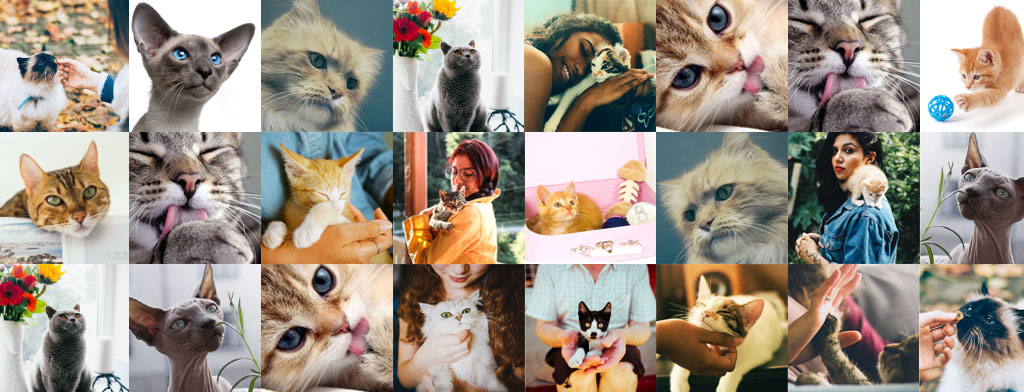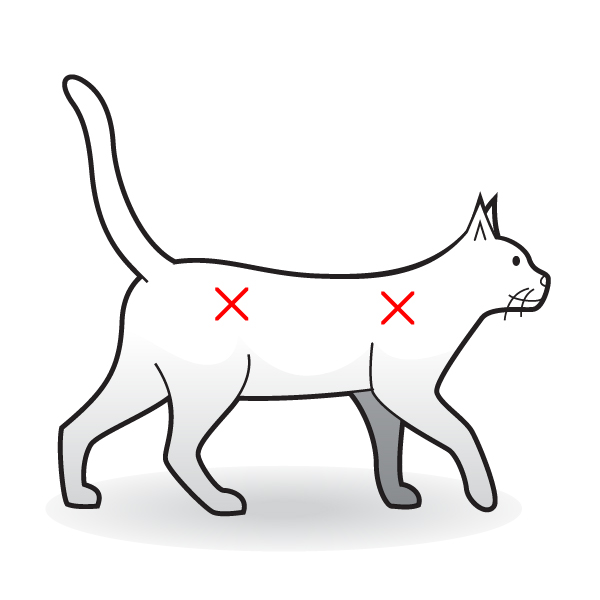Diabetes Mellitus Cat

37 Kingsway
Cronulla NSW 2230 AU
02 9527 2604
cronullavetclinic@gmail.com

Diabetes mellitus
Diabetes mellitus is the second most common endocrine disease seen in cats.
Overview
Diabetes mellitus is one of the most common endocrine disorders in middle-aged to older cats where it has been estimated to affect one in 230 cats. Diabetes can be diagnosed in any breed, age or gender but more commonly seen in older, overweight male cats.
Diabetes occurs when the pancreas does not produce effective levels of insulin. Insulin is required to process sugars, fats and proteins into energy so without it, blood levels of sugar are too high. Body cells become affected as they don't receive adequate nourishment and, therefore, bodily systems start to break down.
Although a serious condition that may require a strict and long-term commitment, it doesn't have to be as difficult as it sounds. Unlike diabetic dogs, the condition can be transient meaning that with aggressive, short-term treatment, weight loss and diet changes, the cat may be cured.
Signs
Diabetes mellitus or simply diabetes is a chronic condition caused by a deficiency or resistance to insulin. Insulin is necessary for the body to turn glucose into energy.
Common signs of diabetes:
- Increased drinking
- Increased urinating
- Larger clumps of urine in the litter
- Obesity
- Change in appetite
- Lethargy
- Muscle loss around the back and hindlimbs
- Flat-footed gait in the hind feet
- Chronic infections
- Enlarged liver
Causes
Predisposing factors:
- Obesity
- High carbohydrate diet
- Inactivity
- Pancreas problems
- Kidney disease
- Heart disease
- Genetics (e.g. Burmese)
- Urinary tract problems
- Stress
- Drugs such as corticosteroids
Types of Diabetes mellitus
| Type I |
The failure to produce insulin Life-long disease More commonly seen in dogs |
| Type II |
Insufficient product of insulin Often related to obesity Can be a transient disease More commonly seen in cats |
Diagnosis
Diagnosis is based on physical examination, laboratory tests and urinalysis. High blood sugar and high levels of glucose in the urine are often found.
Management
Treatment often requires numerous types of lifestyle changes such as medical (insulin injections) and dietary changes. Regular visits to the veterinarian, blood tests and urine tests are required.
Diabetic cats are managed in a similar way to humans with diabetes. In most cases, affected cats require insulin therapy at home once stabilised in hospital. The starting dose is often small and given 1 or 2 times daily with close monitoring of the cat's appetite, water consumption and urinating habits. Occasionally a series of glucose blood tests (referred to as a blood glucose curve) is performed in the hospital over a day to assess the absorption and metabolism of the insulin.
Management of diabetes:
- Weight monitoring
- Monitoring of water consumption and urine output
- A tailored diet that is high in protein for cats
- Insulin injections typically every 12 hours at the same time each day
- Veterinary medications
- Frequent hospital stays for serial blood sampling ('glucose curves')
- Frequent testing of urine glucose and yearly urine culture
- Regular monitoring by your veterinarian
- Learning to handle insulin, use a syringe, draw insulin doses and medicate your pet
Your pet will require a recheck approximately days to a week after diagnosis and start of the treatment, then depending on how well he/she stabilises less frequent rechecks, e.g. monthly to 3 monthly check ups are needed once on a stable dose. As blood glucose levels can increase dramatically during a stay in the hospital, home monitoring is extremely important. In view of the possible remission, careful monitoring of your diabetic pet is required.
Diet therapy
Diet therapy is extremely important in the management of Diabetes in cats.
- Weight control with weight loss aimed at 1-2% loss per week
- High-protein diet
- Low carbohydrate diet
- Strict portion control e.g. a portion 4 times daily
- Canned food preferred over dry for better portion control and additional water intake
Feeding a recommended high protein and low carbohydrate diet is also extremely important in controlling the disease. The goal is to stabilise the pet by controlling clinical signs and avoiding low blood sugar. In rare cases, a strict diet alone may control Diabetes in cats.
Prognosis
Cats can experience diabetic remission, particularly if well controlled initially with insulin and a strict diet. It has been estimated that 80% of cats go into remission when treated immediately after diagnosis and won't require lifelong insulin treatment.
Potential complications
A diabetic pet needs its insulin to survive. But, too much insulin can also be deadly. Too much insulin can result in hypoglycaemia or a low blood sugar level. This can occur when a cat accidentally receives a too high a dose, too many doses or is not eating. Hypoglycaemia is also possible if Diabetic Remission has not been detected early enough. Early signs of low blood sugar include weakness, lethargy or disorientation. If this is to happen, seek veterinary attention immediately. You may be advised to put a small amount of sugar syrup on the cat's gums to be able to safely get the cat to the hospital.
Be aware, if your diabetic cat has been well controlled but starts to drink more again, do not just increase the insulin dose yourself, but visit your vet instead. Sometimes, when the blood sugar level drops below normal, other hormones in the body can kick in to temporarily raise the blood sugar level as a protection mechanism. Increasing the insulin dose in this case can be detrimental.
If your pet experiences any of the following, seek veterinary attention immediately:
- Seizures
- Coma
- Lack of appetite
- Changes in behaviour
- Depression
- Incoordination
- Cataracts
Tips
Tips to help prepare and give Insulin injections:
- Keep insulin refrigerated at all times and do not shake vigorously as it is fragile
- Gently rock the insulin vial to ensure all contents are mixed (avoid shaking)
- Draw up insulin and flick the syringe to remove any bubbles and gently expel them from the syringe
- Locate the area for injection, 3-4cm either side of the spine over the shoulder or backleg. Alternate location for each injection.

- Insert the needle under the skin and pull back on the plunger to make sure you have not punctured a blood vessel (blood will be drawn into the syringe if you are in a vessel). If in position, gently inject insulin under the skin. If blood is drawn, remove and re-insert the needle.
- Reward your pet with affection rather than treats
- Stick to a strict routine by giving the insulin at the same time every day
- Always use a new, sterile needle and syringe
- Always allocate one person to medicating the cat to avoid double-dosing
- Keep a daily log that details weight, any urine or blood readings, and behaviour such as appetite, drinking, activity levels
Always follow the environmental laws for the disposal of medical waste material or bring any used needles and syringes back into the veterinary clinic for disposal.
References
Alt, N., Kley, S., Haessig, M., Reusch, C.E., Day-to-day variability of blood glucose concentration curves generated at home in cats with diabetes mellitus J Am Vet Med Assoc 2007; 230(7): 1011-1017
Appleton, D.J., Rand, J.S., Sunvold, G.D., Insulin sensitivity decreases with obesity, and lean cats with low insulin sensitivity are at greatest risk of glucose intolerance with weight gain. J Feline Med Surgery 2001; 3(4): 211-28
Bailiff, N.L., et al., Frequency and risk factors for urinary tract infection in cats with diabetes mellitus. J Vet Intern Med 2006; 20(4):850-5
Baral, R., Rand, J.S., Catt, M Farrow, H. A., Prevalence of feline diabetes mellitus in a feline private practice. J. Vet. Intern. Med. 2003; 17: 433
Bloom, F., Diabetes Mellitus in a Cat. New England J Med 1937; 217:395-398
Cowan, S.M., Bunch, S.E., Oral Antidiabetic drugs for cats. Compendium 2001; 23(7):633-642
Frank G., Anderson W., Pazak H, Hodgkins E., Ballam J., Laflamme D., Use of a high-protein diet in the management of feline diabetes mellitus. J Am Vet Med Assoc 2000; 212 (3): 1082-1088
Greco DS, Broussard JD, Peterson ME. Insulin therapy. Vet Clin North Am Small Anim Pract 1995;25:677-689
Marshall R. D., Rand J.S., Morton J.M., Treatment of newly diagnosed diabetic cats with glargine insulin improves glycaemic control and results in higher probability of remission than protamine zinc and lente insulins. J Feline Med Surg. 2009;11(8):683-91
Moise N.S., Reimers T.J., Insulin therapy in cats with diabetes mellitus. J Am Vet Med Assoc. 1983 Jan15;182(2):158-64
Nelson, R. W., et al., Effect of dietary insoluble fiber on control of glycemia in cats with naturally acquired diabetes mellitus. J Am Vet Med Assoc 2000;216(7):1082-1088
Panciera, D. L., Thomas, C. B., Eicker, S. W. & Atkins, C. E., Epizootiological patterns of diabetes mellitus in cats: 333 cases (1980–1986). J. Am. Vet. Med. Assoc. 1990;197: 1504–1508.
Salgado D, Reusch C, Spiess B., Diabetic cataracts: different incidence between dogs and cats. Schweiz Arch Tierheilkd. 2000;142(6):349-53
Webb C. Diabetes mellitus without complication – Dogs. In Blackwell’s Five-Minute Veterinary Consult: Canine & Feline. Eds. Tilley LP, Smith FWK. 2007, 4th Blackwell Publishing, Ames, Iowa. pp. 376-377.
McCann TM, Simpson KE, Shaw DJ, et al. Feline diabetes mellitus in the UK: The prevalence within an insured cat population and a questionnaire-based putative risk factor analysis. J Feline Med Surg 2007; 9: 289-299.